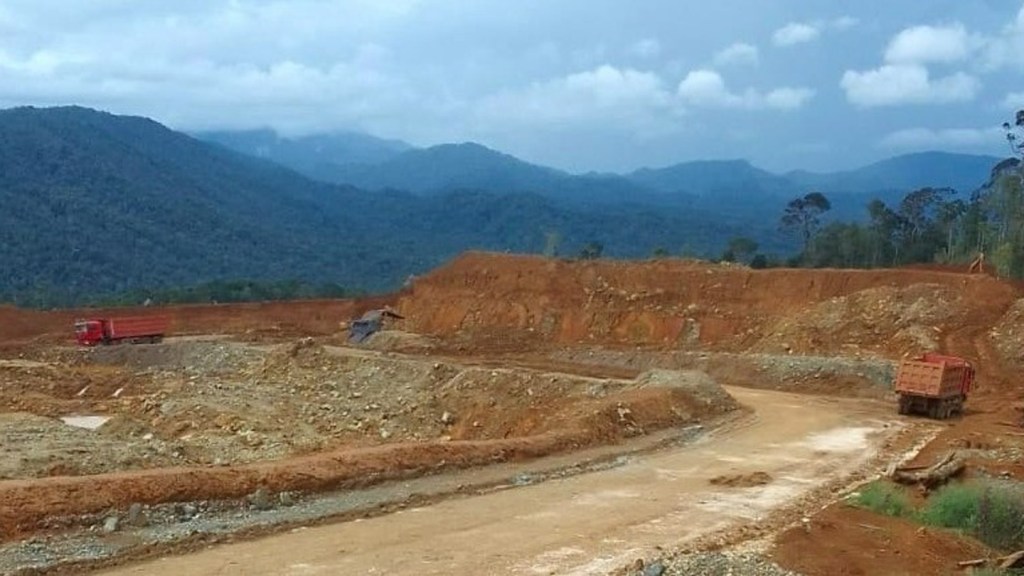A new scientific study supported by the Dutch Ministry of Infrastructure warns that the renewable energy industry could be about to face a fundamental obstacle: shortages in the supply of rare metals.
To meet greenhouse gas emission reduction targets under the Paris Agreement, renewable energy production has to scale up fast. This means that global production of several rare earth minerals used in solar panels and wind turbines—especially neodymium, terbium, indium, dysprosium, and praseodymium—must grow twelvefold by 2050.
Videos by VICE

But according to the new study by Dutch energy systems company Metabolic, the “current global supply of several critical metals is insufficient to transition to a renewable energy system.”
The study focuses on demand for rare metals in the Netherlands and extrapolates this to develop a picture of how global trends are likely to develop.
“If the rest of the world would develop renewable electricity capacity at a comparable pace with the Netherlands, a considerable shortage would arise,” the study finds. This doesn’t include other applications of rare earth metals in other electronics industries (rare earth metals are widely used in smartphones, for example). “When other applications (such as electric vehicles) are also taken into consideration, the required amount of certain metals would further increase.”
Demand for rare metals is pitched to rise exponentially across the world, and not just due to renewables. Demand is most evident in “consumer electronics, military applications, and other technical equipment in industrial applications. The growth of the global middle class from 1 billion to 3 billion people will only further accelerate this growth.”
But the study did not account for those other industries. This means the actual problem could be far more intractable. In 2017, a study in Nature found that a range of minerals essential for smartphones, laptops, electric cars and even copper wiring could face supply shortages in coming decades.
The other challenge is that rare metals mining is massively concentrated in just a few countries: particularly China, which dominates 80 percent of mining and nearly 95 percent of refining. Although Australia and Turkey are significant producers of specific metals (such as neodymium and boron respectively), Europe and the US are overwhelmingly dependent on China, which would be in a position to control global supply—a position that could be easily abused.
“There might be a certain moment when they prioritize their own renewable production over others—they have been taking a strategic position in getting all the technological expertise and data around this,” said lead author Pieter van Exter in a statement.

The good news is that ample identified reserves for the renewable energy transition, at least, do exist. The key challenge is lead-times. It takes large capital investments and between 10-20 years to open new mines.
One solution is to find viable substitutions for rare metals. This holds some promise, but could also shift the burden to other metals. Another solution is for Europe and others to revitalise domestic mining industries using new technologies that can reduce their energy and water footprint. This could still be costly—and domestic reserves aren’t ample enough to rival the likes of China.
The key is the ‘circular economy,’ a regenerative approach designed to minimise resource inputs and waste by implementing principles and methods of design, maintenance, repair and recycling. According to Metabolic founder Eva Gladek, “It is essential for us to manage materials in a circular fashion in order to ensure that we have enough for the technologies critical to a low-carbon future.”
Currently, however, recycling rates for critical metals are at below 1 percent, and some rare earth metals aren’t recycled at all. If that practice continues, critical supply bottlenecks will be inevitable: “Unless a circular strategy is implemented, the industry will remain completely reliant on mining for its raw material supply. To make recycling the dominant source of raw materials, very high recycling rates will be needed,” the company said.
To succeed, the renewable energy industry needs to embrace the circular economy. If it doesn’t, the report authors told me, “this could drastically delay the energy transition—a disruption which we cannot afford in the race against climate change.”




